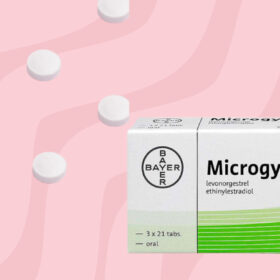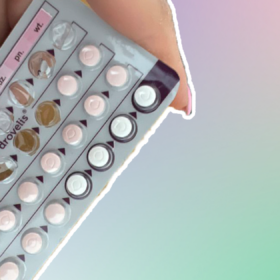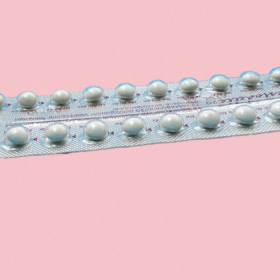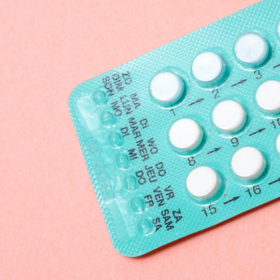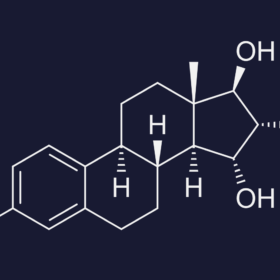
The combined pill – your guide to the different brands
What is the combined pill?
The combined pill contains two hormones oestrogen and progestogen, these prevent the ovaries releasing an egg each month. The combined pill also:
- Thickens the mucus in the neck of the womb, so it is harder for sperm to penetrate the womb and reach an egg
- Thins the lining of the womb, so there is less chance of a fertilised egg implanting into the womb and being able to grow
But with over 30 brands of the combined pill to choose from, what is the difference and which is right for you?
Read on to discover the ingredients, side effects of the pill and read real-life reviews for the most popular brands available today.
Jump to 👉:
What are the main differences between combined pill brands?
You are not alone when it comes to the confusion about differences between pills, even healthcare professionals find it challenging to understand. We have a blog about how we at The Lowdown look at different pill groups if you want more information.
There are two main things you can change between types of combined pill:
- the oestrogen – most combined pills contain Ethinylestradiol but have varying strengths. Low dose is counted as 20mcg, normal dose is 30mcg and high dose is 35mcg. Qlaira and Zoely have a different type of oestrogen compared to the rest.
- the progestogen. There are a range of different progestogens which may have slightly different side effects, usually we describe this in terms of some pills being more androgenic and some being anti-androgenic. To find out more about androgens check out our blog.
There are brands of combined pills which actually contain the same hormones and doses, for example the Microgynon contraceptive pill and Ovranette both contain, Ethinylestradiol (oestrogen) and Levonorgestrel (progestogen). Same hormones but different brands….. You might be aware of this as some commissioning groups in the NHS ask GPs to change people onto the cheapest brand to save cost, the theory being that it is the same hormones so there should not be a difference. Unfortunately, we do hear some people have different side effects when changing between pill brands, which contain even identical hormones and doses, although it’s difficult to say why this might be. Lloyds chemists have suggested that although the different brands have the same active ingredients, there may be differences in the other components of medication which affect absorption and release.
For more information, you can look at side effects for Ovranette and Microgynon here.
All combined pills have a slight increased risk of blood clots, some more than others. Have a look at our blog about blood clots to understand what that means to you and how changing the progestogen type in the pill can affect the risk of getting a DVT or pulmonary embolism.
What does ED mean in the name?
The combined pill normally follows a 21/7 format: 21 days on the pill, seven day break, repeat. You might have noticed that some pills say ED after the name, this means ‘everyday’. These contain a number of ‘dummy’ or sugar pills which mimic the break, you keep taking a tablet everyday but will have a withdrawal bleed during this time.
We have done a guide about taking the combined pill continuously which is a little more tricky with the ED pills as it means missing out dummy pills.
Cilest Pill
What’s in Cilest?
The Cilest combined pill contains a higher dose of oestrogen (Ethinylestradiol) (35mcg) and a progestogen (Norgestimate). Norgestimate is classed as a less androgenic progestogen which usually means less of the unwanted side effects like oily acne-prone skin, excessive hair growth (on places such as the face and the chest) and hair loss from the head.
Sadly Cilest was discontinued in 2019. If you’re looking for an alternative, then check out the Cilique pill or Lizinna pill, which contain the same hormonal ingredients and quantities.
Cilest side effects
The below side effects are reported from our users
- Tender breasts
- Vaginal discharge
- Enlarged breasts
- Period like cramping
- Thrush
Femodene Pill
What’s in Femodene?
The Femodene combined pill contains a normal dose of oestrogen (Ethinylestradiol) (30mcg) and a progestogen (Gestodene). Gestodene is classed as a less androgenic progestogen which means less of the unwanted side effects like oily acne-prone skin, excessive hair growth (on places such as the face and the chest) and hair loss from the head.
Femodene contains the same hormones as these other brands – Femodene ED, Katya 30/75, Millinette 30/75.
Femodene side effects
- The below side effects are reported from our users
- Enlarged breasts
- Tender breasts
- Period like cramping
- Back pain
- Vaginal discharge
Femodette Pill
What’s in Femodette?
The Femodette combined pill contains a low dose of oestrogen (Ethinylestradiol) (20mcg) and a progestogen (Gestodene). Gestodene is classed as a less androgenic progestogen which means less of the unwanted side effects like oily acne-prone skin, excessive hair growth (on places such as the face and the chest) and hair loss from the head.
Femodette contains the same hormones as these other brands – Millinette 20/75 and Sunya 20/75
Femodette side effects
The below side effects are reported from our users
- Tender breasts
- Vaginal dryness
- Back pain
- Enlarged breasts
- Period like cramping
Marvelon Pill
What’s in Marvelon?
The Marvelon combined pill contains a normal dose of oestrogen (Ethinylestradiol) (30mcg) and a progestogen (Desogestrel). Desogestrel is classed as a less androgenic progestogen which means less of unwanted side effects like oily acne-prone skin, excessive hair growth (on places such as the face and the chest) and hair loss from the head.
Marvelon contains the same hormones as Gedarel 30
Marvelon side effects
The below side effects are reported from our users
- Vaginal discharge
- Period like cramping
- Enlarged breasts
- Tender breasts
- Vaginal dryness
Mercilon Pill
What’s in Mercilon?
The Mercilon combined pill contains a low dose of estrogen (Ethinylestradiol) (20mcg) and a progestogen (Desogestrel). Desogestrel is classed as a less androgenic progestogen which means less of the unwanted side effects like oily acne-prone skin, excessive hair growth (on places such as the face and the chest) and hair loss from the head.
Mercilon contains the same hormones as Gedarel 20
Mercilon side effects
The below side effects are reported from our users
- Tender breasts
- Vaginal discharge
- Vaginal dryness
- Back pain
- Period like cramping
Microgynon 30 Pill
What’s in Microgynon?
The Microgynon combined pill is one of the most commonly used pills in the UK and is often a starting pill for most women.
This combined pill contains a normal dose of oestrogen (Ethinylestradiol) (30mcg) and a progestogen (Levonorgestrel). Levonorgestrel is classed as an androgenic progestogen which means possible side effects like oily acne-prone skin, excessive hair growth (on places such as the face and the chest) and hair loss from the head. Combined pills with this type of progestogen have a lower risk of blood clots than some other combined pills.
Microgynon contains the same hormones as these other brands – Microgynon ED, Rigevidon, Maexeni, Levest and Ovranette
Microgynon side effects
The below side effects are reported from our users
- Tender breasts
- Vaginal discharge
- Enlarged breasts
- Period like cramping
- Vaginal dryness
Yasmin Pill
What’s in Yasmin?
The Yasmin combined pill contains a normal dose of oestrogen (Ethinylestradiol) (30mcg) and a progestogen (Drospirenone). Drospirenone is classed as an anti-androgenic progestogen which means it can help with things like oily acne-prone skin or excessive hair growth (on places such as the face and the chest). You can buy Yasmin online here at The Lowdown
Yasmin contains the same hormones as these other brands – Lucette.
Yasmin side effects
The below side effects are reported from our users
- Tender breasts
- Enlarged breasts
- Vaginal dryness
- Vaginal discharge
- Period like cramping
Try our contraception comparing tool to help guide your choice of method.
You can also read more about contraceptive pills in our guide to the different types of progestogen-only pill.
Our medical review process
This article has been medically reviewed for factual and up to date information by a Lowdown doctor.


